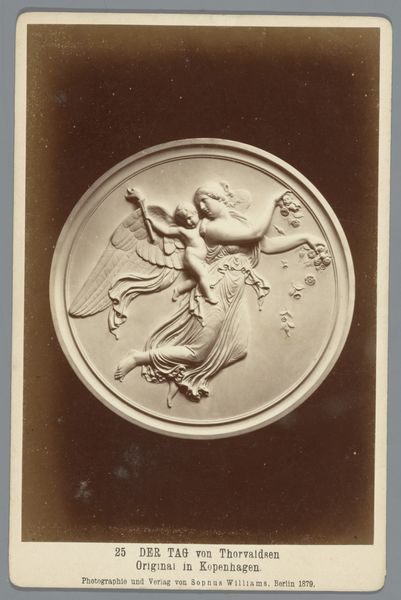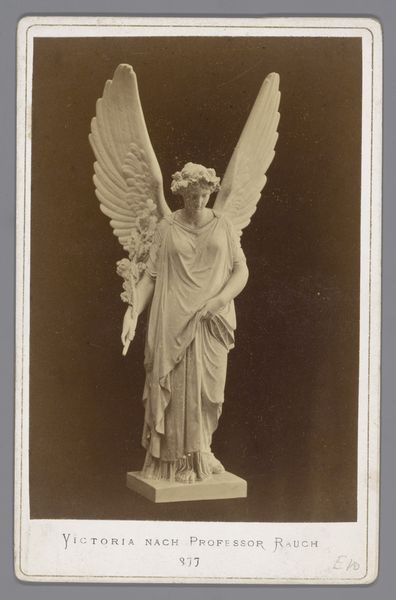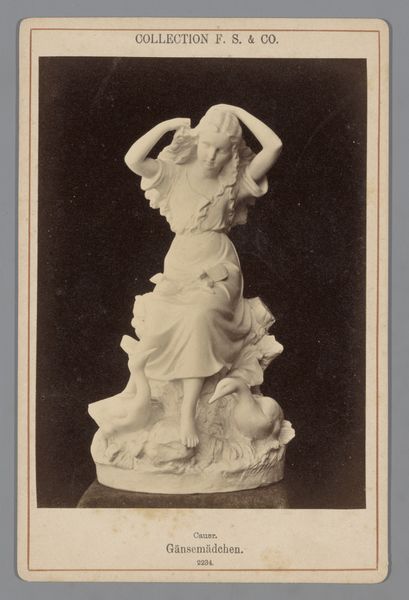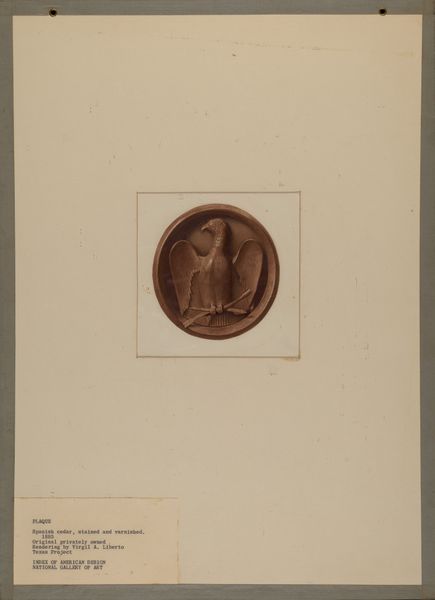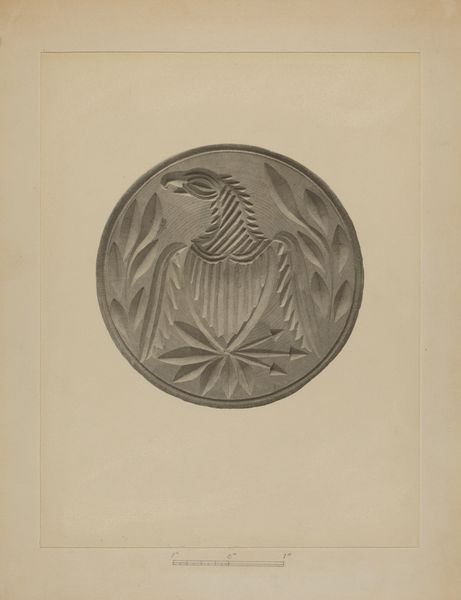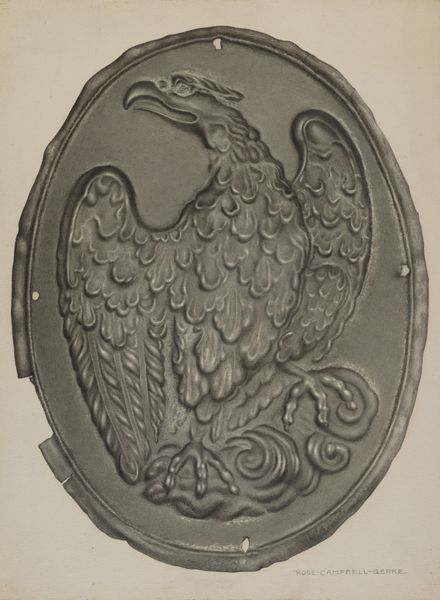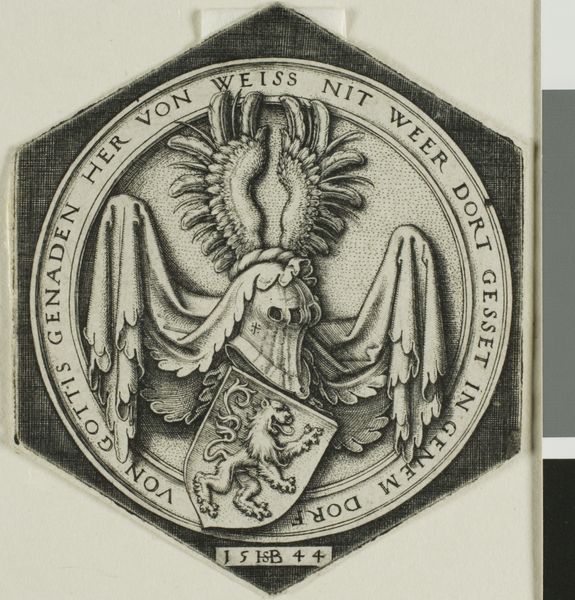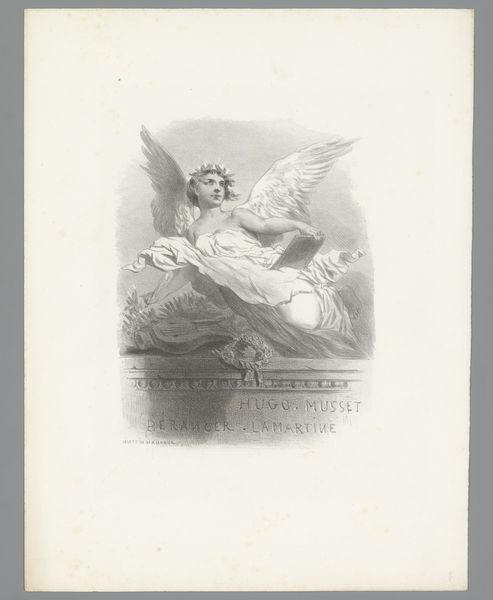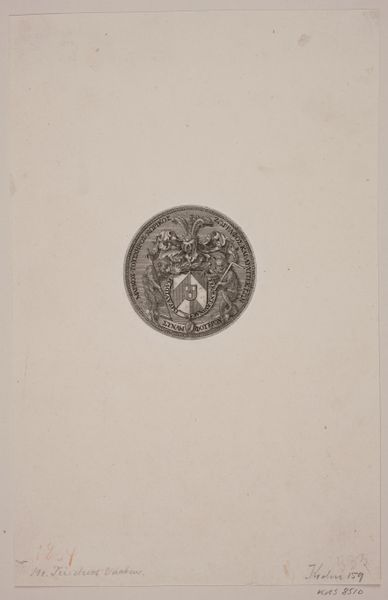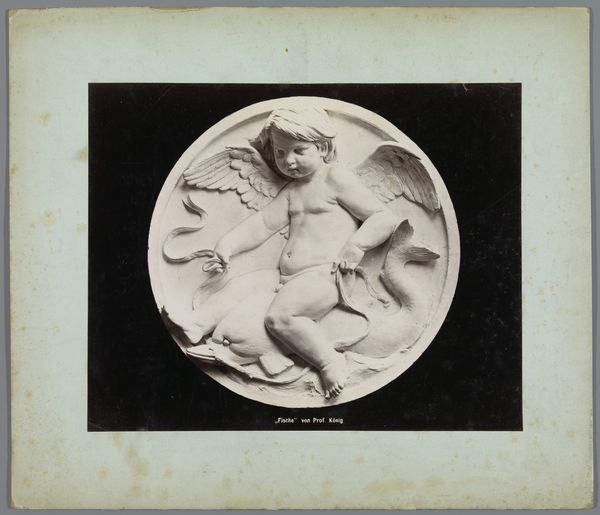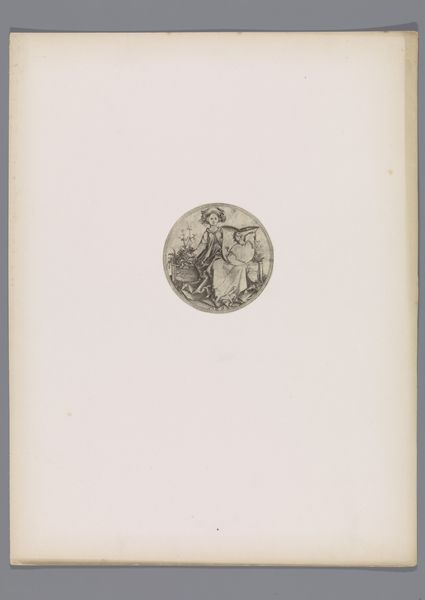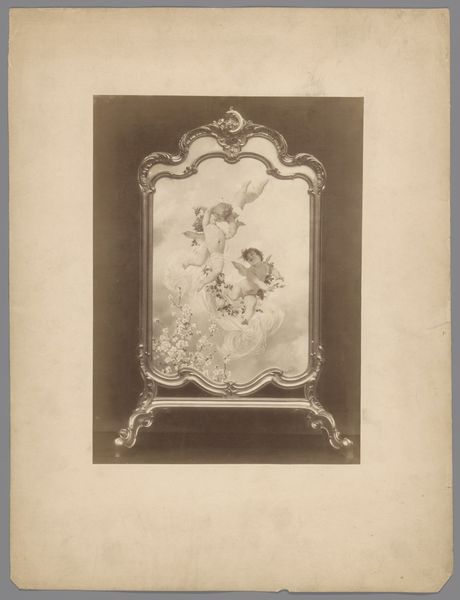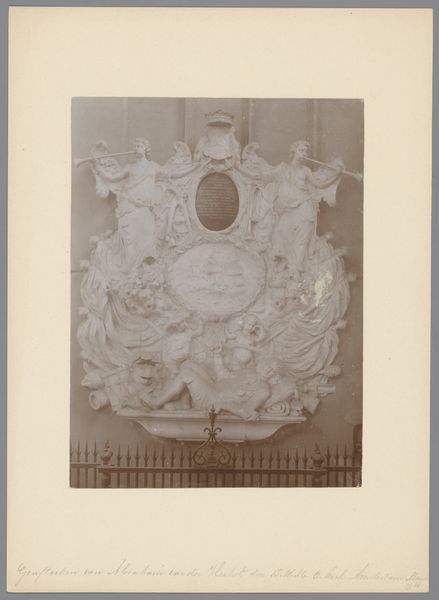
relief, photography, sculpture, gelatin-silver-print
#
portrait
#
neoclassicism
#
relief
#
figuration
#
photography
#
sculpture
#
gelatin-silver-print
#
ceramic
Dimensions: height 150 mm, width 100 mm
Copyright: Rijks Museum: Open Domain
This photograph, “Reliëf, voorstellende een personificatie van de nacht”, was made by Sophus Williams, likely around 1879. It depicts a plaster relief, probably itself a copy of an earlier sculpture. Plasterwork like this was a mainstay of 19th-century taste, bringing classical imagery into middle-class homes. The winged figure of Night cradling a child speaks to romantic sensibilities. The material itself is humble: Plaster is a mix of gypsum, water, and sometimes additives like lime. The mold-made process allowed for relatively quick reproduction, making this classical motif widely available. Consider the labor involved in quarrying the gypsum, transporting it, and the skilled work of the plasterer. These pieces often served as teaching tools for art students, and as models for aspiring sculptors. Thinking about the processes and social context of making helps us appreciate the beauty and accessibility of such objects, and challenges traditional notions about the divide between art and craft.
Comments
No comments
Be the first to comment and join the conversation on the ultimate creative platform.
